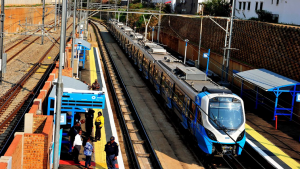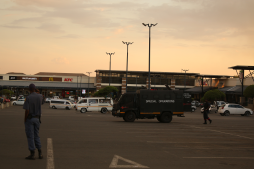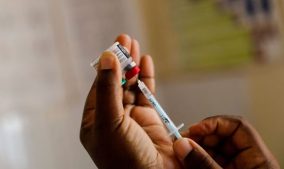The National Institute for Communicable Diseases (NICD) says it is not possible at this stage to say with certainty how many of the COVID-19 related deaths are due to the Omicron variant.
Head of Public Health Surveillance and Response division at the NICD, Dr. Michelle Groome, says the Omicron variant is currently dominating the sequencing done on the virus by the institute.
Groome has urged that people continue observing non-pharmaceutical interventions like mask-wearing, sanitising, and social distancing. She encouraged people to continue getting vaccinated.
“We’re not sequencing all of our samples. We sequence a proportion, so it’s very difficult to know how many deaths are due to Omicron. We know that Omicron has taken over from delta in all the provinces and is now dominating our sequencing. So it’s likely that the hospitalisation and deaths, we’re seeing at the moment, are due to the Omicron variant. But we’re not sequencing everything.”
NICD briefs on developments around COVID-19:
Current statistics
The National Institute for Communicable Diseases (NICD) reported 633 hospital admissions on Tuesday. The total fatalities currently stand at 90 488.
The total number of laboratory-confirmed cases in South Africa is 3 332 008.

Loading…
Omicron passes peak in Gauteng
COVID-19 cases appear to have peaked in Gauteng province, one of the first places in the world where the Omicron variant surfaced, and the impact of surging infections has been less severe than previous waves, scientists said on Wednesday.
Scientists from South Africa’s National Institute of Communicable Diseases (NICD) said that while more study was needed, the data from South Africa – whose experience is being closely watched around the world – told a “positive story” about the variant’s severity.
Gauteng, South Africa’s commercial hub and home to one of the continent’s busiest airports, and the region of the country where Omicron first emerged, is now seeing a fall in daily cases and the percentage of positive tests, the NICD’s Michelle Groome told a news briefing.
“Really we feel that this has persisted for over a week and that we are past the peak in Gauteng,” she said.
There had been a “levelling off” in three other provinces – Limpopo, North West and Mpumalanga, she added, though cases were still increasing elsewhere.
Groome cautioned that some of the lower case numbers could be due to lower levels of testing during the holiday period.
South Africa, now maintaining the lowest level of a five-tier system of restrictions despite a rapid surge in infections, is monitoring hospitalisation levels very closely.
While these have also risen, they have so far remained far below the levels seen during previous waves of the pandemic, with deaths also lower than seen in the past and people staying in hospital for shorter periods, the NICD’s Waasila Jassat said, warning however that relevant data tended to lag.
Infections in the first four weeks of the fourth coronavirus wave, driven by Omicron, rose well above those seen in the previous three waves, NICD data showed, but the proportion of people admitted to hospital stood at 5.7%, compared to above 13% in the other waves.
The proportion of people admitted to hospital who later died meanwhile dropped to 5.6%, compared with 19% or above in the first, second or third waves.
Some 87% of COVID-19 deaths seen in South Africa between November 7 and December 18 were of people who were unvaccinated or not fully vaccinated, the data showed. -Additional reporting by Reuters






